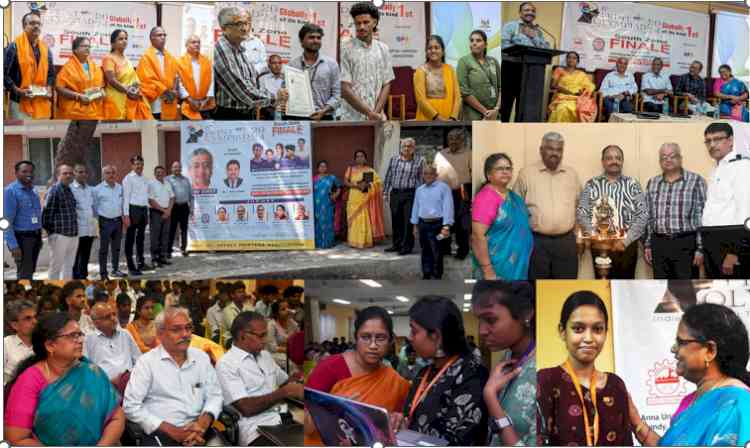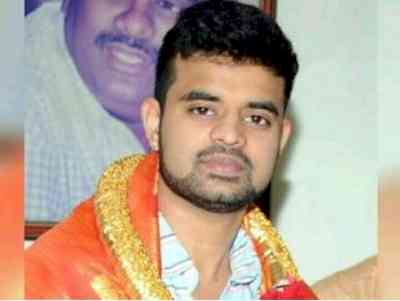Eminent neurologists & specialists discuss Post Stroke Spasticity & Cerebral Palsy Management at iSTART
Author(s): City Air NewsA two-day conference to discuss ways to initiate better management and rehabilitation programs for victims and to enhance knowledge about these disorders happened at Medanta- The Medicity. New Delhi, September 16,...


A two-day conference to discuss ways to initiate better management and rehabilitation programs for victims and to enhance knowledge about these disorders happened at Medanta- The Medicity.
New Delhi, September 16, 2014: Neurological disorders like Post Stroke and Cerebral Palsy can have debilitating impact on the lives of the victims. While medical science is yet to find a cure to correct these disorders of the nervous system, there are several modalities that can be used to manage the condition and make lives better for patients.
A two-day conference to discuss ways to initiate better management and rehabilitation programs for victims and to enhance knowledge about these disorders happened at Medanta- The Medicity.
Supported by Allergan India, the conference brought together leading neurologists and experts from across the country with Dr Arun Garg, Consultant Neurologist, Medanta- The Medicity, Gurgaon as Organizing Chairman and Dr A N Jha as the Chief Patron. The focus of the conference was on ‘Clinical Approach in the Management of Post Stroke Spasticity & Cerebral Palsy and Usage of Botulinum Toxin Type A’.
The conference started with an inaugural address by Dr. Naresh Trehan, Renowned Cardiovascular and cardiothoracic Surgeon, Chairman and Managing Director Medanta – The Medicity and was followed by a series of sessions and forums attended by a number of eminent doctors.
A brain stroke occurs when blood supply is disrupted to a part of the brain either due to a clot or due to a hemorrhage, depriving that part of the brain from crucial oxygen supply. A stroke can cause disability and paralysis. Spasticity happens when the affected part of the brain loses its capacity to send messages to its target muscles, telling them to relax. This leads to increase in muscle activity or spasms, which makes life very difficult. Many people continue to suffer due to lack of awareness about mechanisms that can help them lead a better life.
Similarly, when cerebral -- an area in the brain -- is affected by palsy meaning partial or complete muscle paralysis, the result affects the human body with rare and sometimes brutal physical disabilities. The result is motor disorder characterized by loss of control over muscle movement.
“The patients of both Cerebral Palsy and Post Stroke Spasticity need continued therapy and rehabilitation as part of the disease management programme. Botulinum Toxin Type A, popularly known as Botox, is a helpful management modality for the patients as it helps bring normalcy into their lives and improves their quality of life by controlling the disorders,” said Dr. Garg.
The two-day conference iSTART aimed to enhance knowledge and awareness about cerebral palsy and spasticity and impart theoretical and practical knowledge on the usage of botulinum toxin type A injections, and the importance of multi-disciplinary approach in improving the patient treatment outcome. The conference also included live demonstrations of selected patients with spasticity being administered with Botulinum type A injections. Eminent specialists from different parts of the country constituted the faculty.
Spasticity can make movement, posture, and balance difficult since the brain has lost its ability to send signals to the desired muscles. It may affect your ability to move one or more of your limbs, or to move one side of your body. It also causes muscles in the arms or legs to tighten uncontrollably, causing pain and discomfort. Sometimes spasticity is so severe that it gets in the way of daily activities and in some situations this loss of control can be dangerous for a person.
Spasticity is rarely recoverable but with some actions including a regimen of exercise, physiotherapy and medication, it can be controlled and life can be made easier. A purified neurotoxin complex protein, Botulinum toxin type A, when injected into the muscle works at nerves to block the signal to the muscle. Once the brain signal is blocked, the muscle relaxes and its hyperactivity is controlled. The impact of one injection remains for approximately 3 to 4 months, and comes as a great relief to the suffering person. It works in cases of Cerebral Palsy in the same way.
“The use of Botulinum Toxin Type A, a neuromuscular blocker, as a way to relax the strained muscles in such situations is a very useful therapy. We need to enhance knowledge about the same and encourage its usage so as to make neurological disorders like Cerebral Palsy and Post Stroke Spasticity better manageable in patients,” said Dr Garg.
The conference had been designed to provide a platform for discussion between experts themselves and working out strategies for better patient treatments. Besides doctors, pediatric neurologists, pediatric orthopedics, physiotherapists and urologists, several people associated with patients suffering from these disorders also attended the conference. Following each expert talk, participants were invited and encouraged to participate in the discussions to dispel their doubts.
“In case of severely restricted patients, Botulinum toxin type A injections can help allow them carry on their day to day activities like transfer from bed, walking to the washroom easily. In some cases there can even be a positive gain of function i.e. they may acquire some previously lost limb functions,” said Dr Garg.
Physiotherapy, medication and Botulinum toxin type A are part of a sustained therapy that needs to be given to such patients. When used together, they can help bring a lot of normalcy into the lives of the affected.
-----------------------------
Readers may send their news/views/feedback to us:
[email protected]

 cityairnews
cityairnews 
















